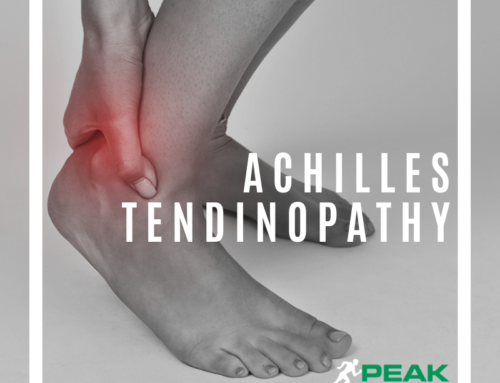PEAK PAGES
Welcome to another edition of “Peak Pages” looking at the latest and greatest in the world of Peak Podiatry, biomechanics and sports podiatry.
Winter months are drawing to a close. Winter finals are done and won and sporting codes for some are changing. For many its a chance for more k’s in the legs with warmer days, earlier sunrise and brighter skies a welcome change.
This year has seen a further increase in participation in the various funs runs and congratulations to all that took part. With running at an all time high, footwear discussion still remains a hot topic – minimalism v traditional v maximalism. Peak Podiatry continues to stay abreast on the the latest research and tech releases and can provide accurate biomechanical and symptomatic specific direction for your footwear requirements.
This issue
- Extracorporeal ShockWave Therapy
- Injury of the Month
- City to Surf 2013 – Peak represented
Extracoporeal Shock Wave Therapy
Here at Peak we are excited to announce that we are able to offer Extracorporeal Shockwave Therapy (ESWT) for the treatment of chronic
 plantar fascitiopathy and other lower limb tendonopathies.
plantar fascitiopathy and other lower limb tendonopathies.
Originally used for treating kidney stones, Extracorporeal Shockwave Therapy (ESWT) has proven itself to be effective in the treatment of certain musculoskeletal conditions over the last 2 decades.
ESWT a highly specialised piece of equipment designed to deliver a precise, calculated dose of high energy into the treatment area.
It is particularly favoured by active individuals as it is totally non-invasive and requires minimal or no down-time after treatment.
HOW DOES IT WORK?
Shock waves are acoustic pressure waves with a unique waveform characteristic. Research has shown that such waveforms have biological effects including:
- Release of certain growth factors in the targeted tissues, which may lead to formation of new vessels and other biological effects associated with tissue healing. The effect occurs over a period of several months and is responsible for facilitating regeneration and repair in certain injured and degenerative tissues.
- Effects on nerves carrying pain signals, which may result in pain reduction.
- Interruption of the “pain-spasm” cycles which occur in many chronic pain situations.
EVIDENCE OF BENEFITS?
There are numerous papers supporting ESWT for chronic plantarfasciopathy including:
“Extracorporeal shock wave therapy contributes to healing and pain reduction in plantarfasciitis and ultrasound imaging is able to depict the morphologic changes related to plantarfasciitis as a result of this therapy.”
Vahdaptour etal, 2012. Journal of Research in Medical Sciences.
“In conclusion, shockwave therapy not only decreased the pain VAS rating but also improved the gait parameters of the symptomatic foot in PF patients”
Hsu etal Bone Joint J 2013;95-B:1088–93.
WHAT CONDITIONS CAN BE TREATED?
Conditions most commonly treated with this therapy include:
- PLANTARFASCIITIS
- Heel pain
- Arch Pain
- ACHILLES TENDONITIS
- KNEE
- Patellar tendinopathy (jumpers knee)
- ITB Syndrome
- Muscular and myofascial trigger points
The use of the Dornier Focus Extracorporeal Shockwave system allows a high level of control, precision and prescription of shockwave therapy. Unlike cheaper ‘radial’ shockwave machines, the focusing ability of the shockwave beam in this machine allows acute delivery of the shockwave to the treatment area. No, not all machines are the same.
HOW IS THE TREATMENT SESSION CARRIED OUT?
An ESWT session is on site at Peak Podiatry and will take around 20 minutes. We do allow 30 min for all treatment consultations.
The injured site is first identified, then precisely targeted using the ESWT focused beam. Shockwaves are then delivered in rapid succession, ramping up from low levels to therapeutic levels.
HOW MANY SESSIONS ARE NEEDED?
On average, 3-4 treatments are usually required to deliver the required total energy dosage. The interval between sessions is usually 1 week and tissue healing is expected over 6-8 weeks.
Indications for treatment and patient selection is where symptoms have failed with conservative treatment and are of greater than 6 months in duration.
ESWT has a role but does not replace the importance of conservative physical and orthomehanical treatment. Here at PEAK we are well aware this is an end stage treatment and strict patient selection protocols are important to ensure the success of such treatment for patients.

Injury of the Month
Multiple Lisfranc fractures of a foot following a fall from a 5 metre wall that collapsed.
This patient sustained this injury which consisted of multiple lisfranc fractures, and dislocations on NYE while travelling overseas. His injury was compared to that of a land mine injury and was very lucky to have a very experienced surgeon working at the hospital that evening that conducted the emergency surgery and saved his foot.
With extensive physiotherapy and rehabilitation in the pool Alex transitioned well from a cast to non cast boot to an orthotic.
Post surgery
 This patient amazingly is able to walk relatively pain free, wearing a full rigid orthotic in the right shoe to avoid flexing his toes and increasing the load on his midfoot. He still has multiple stress reactions in the area. Orthopaedic opinion is that he will need a fusion at some point, but that may be 12 months or 10 years if the pain and swelling are manageable.
This patient amazingly is able to walk relatively pain free, wearing a full rigid orthotic in the right shoe to avoid flexing his toes and increasing the load on his midfoot. He still has multiple stress reactions in the area. Orthopaedic opinion is that he will need a fusion at some point, but that may be 12 months or 10 years if the pain and swelling are manageable.
City to Surf 2013
 Congratulations to all who participated in this years City to Surf.
Congratulations to all who participated in this years City to Surf.
Pre and post event has kept us busy as participation numbers again reach record levels.
47,000 to be precise! Included was two of our own. Well done girls.







Leave A Comment